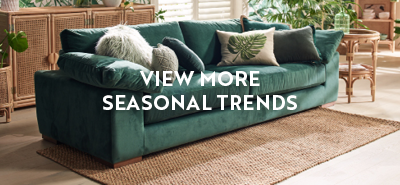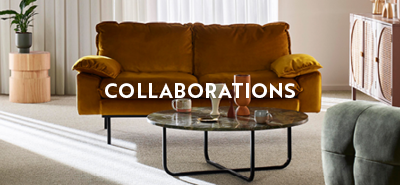
Darren has a broad portfolio, having studied fine art & graphic design, originally working in advertising and owning his own graphic design company. After succumbing to his true passion, Darren now operates his own interior design studio and has been a judge on numerous seasons of The Block.
Creating an eco-friendly home can have many meanings, from protecting your home against external forces like the weather, to selections eco-friendly building materials and making responsible, long-term selections for furnishings and decor.
There are many ways to create an eco-friendlier home, including water efficiency, solar energy collection and storage, hydronic heating, and natural cooling. Whilst there isn’t a singular approach, every eco-friendly decision that you make for your home will have a positive impact on the environment.


FLOORING
Using a wool carpet, such as Carpet Court’s Sandy Ridge range, has the benefit of being a renewable and natural fibre. The lanolin that is inherent to wool naturally repels liquids, making cleaning and maintenance an easy and efficient affair.
Triexta carpets, such as Carpet Court’s Hideaway Lodge, have the benefit of being long lasting and highly resilient, featuring negatively charged fibres which provide them stain-repellent qualities meaning that most spills can be cleaned with water alone.
Australian timber flooring made from plantation grown Eucalypt, such as Carpet Court’s Terra Firma, has a thirteen coat engineering system, making it a tough and durable hard flooring option with anti-scratch and impact resistance qualities. The 15-year surface warranty, and 25-year structural integrity warranty, make it a product that you can buy once and buy well.
BLINDS AND SHADES
Heating and air conditioning can be a costly exercise for both your bank account and the environment. While temperature control is essential in the home, one of the best ways to make your home more eco-friendly is to effectively insulate it against outside conditions.
Window treatments have long been used to create a barrier between the warming sun and your home – coming in the form of shutters, rollers, venetian, or roman blinds. Veri Shades® now allow you to control exactly how much light and heat comes into your home.
In winter you will want to create a strong barrier between your windows and the openings to the cold outside, so a block-out blind, panel or curtain from wall-to-wall and ceiling-to-floor will give you ample protection. Creating a barrier to stop warm or cold air coming into your home is the best way to minimise the use of heating or cooling resources.
UV light and glare are both important things to protect your home from too, as the UV light can damage internal surfaces and materials, requiring them to be replaced more regularly. Glare can also impact your visual experience within the home. Transitional Light Filters can do the job of reducing both UV light and glare from entering your home, helping you to protect elements within your interior.
Rollers, such as Carpet Court’s Downton blinds, are an efficient alternative, being lead and PVC free, with Greenguard Gold accreditation which meets the most rigorous of standards for low emissions of volatile organic compounds.
Heat can also leach into or out of a home through the gaps in your doors so using door barriers, such as a door snake, is an easy solution. Having your floors covered in either carpet or large floor rugs will also prevent the cold from radiating up through the floor and into your room, while also helping to control your overall heating bills and energy consumption.


FEELING INSPIRATION?
View more of our Seasonal Trends articles or check out our Influencers Collaborations for more interior ideas and design tips.









